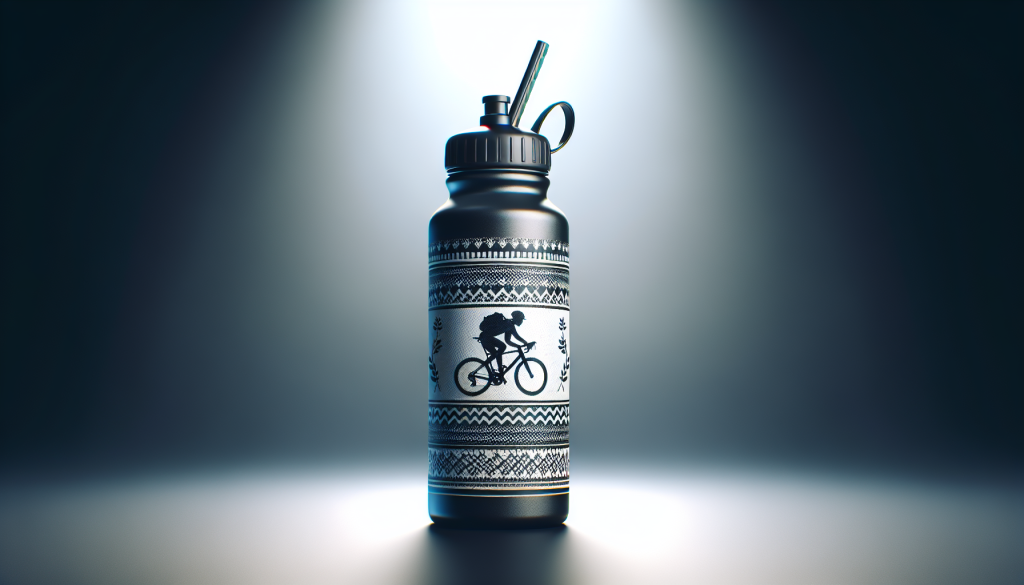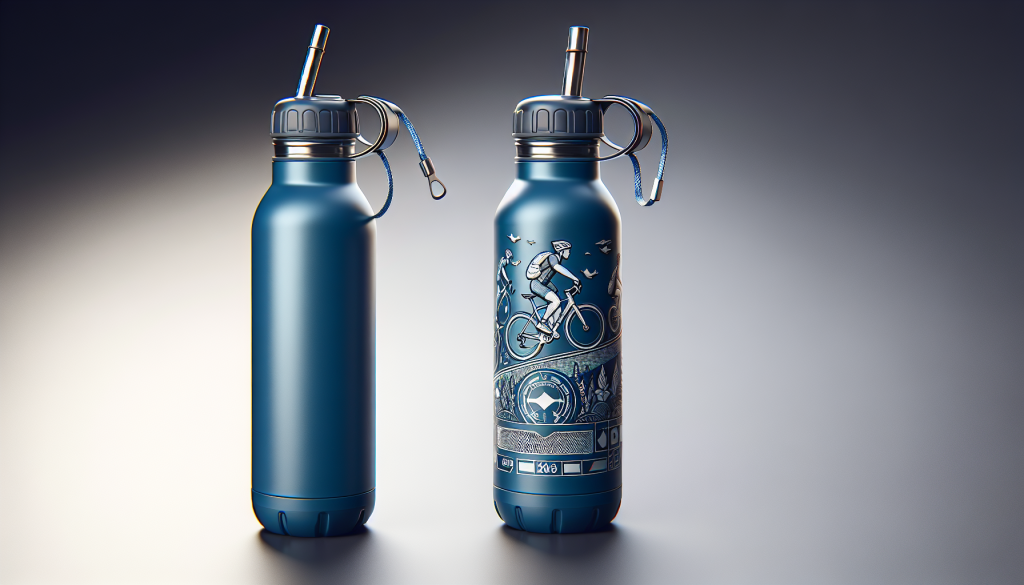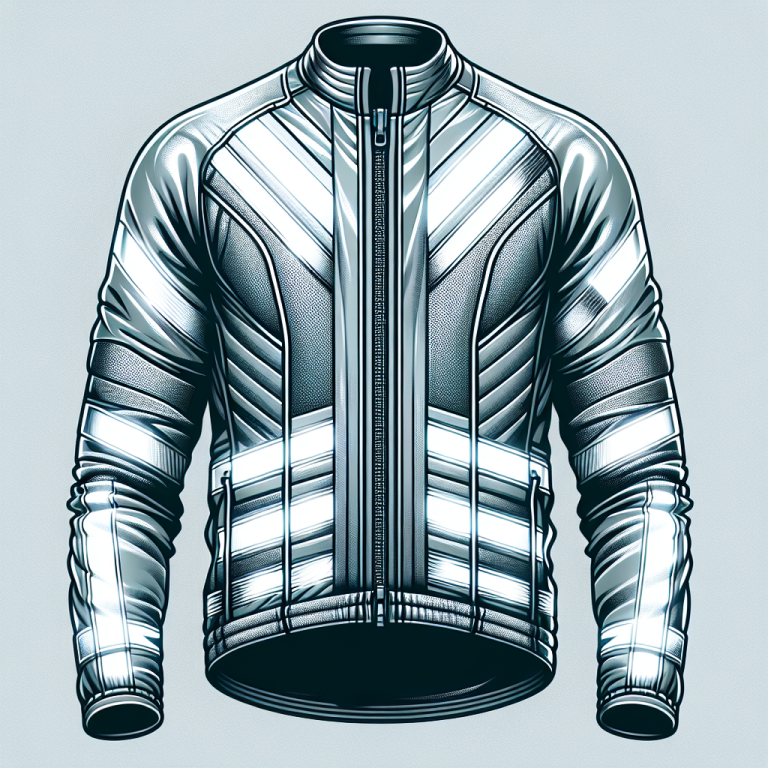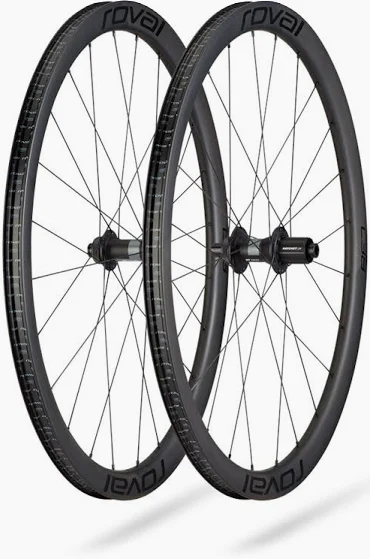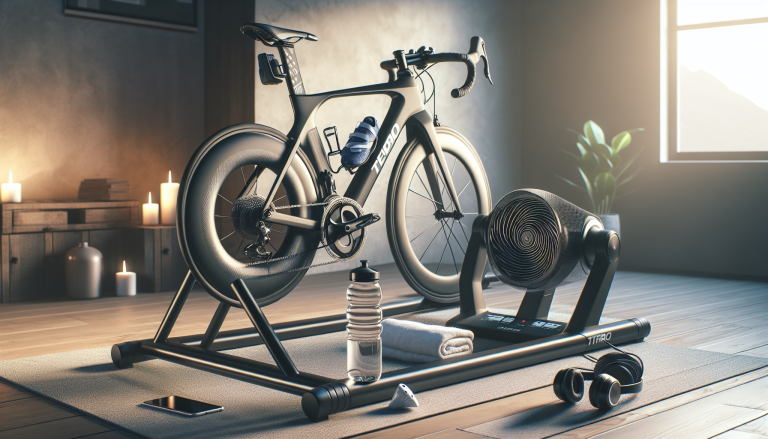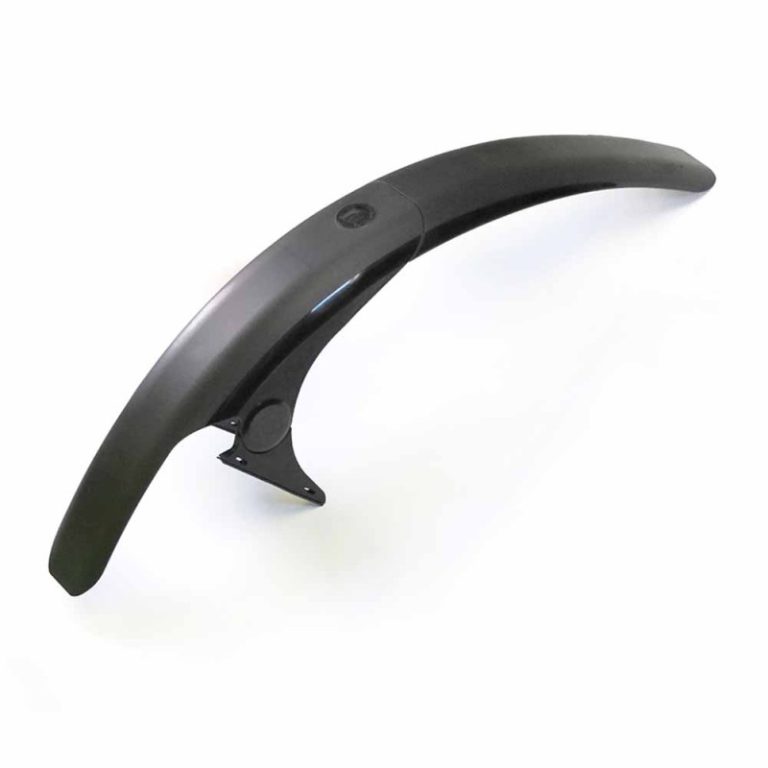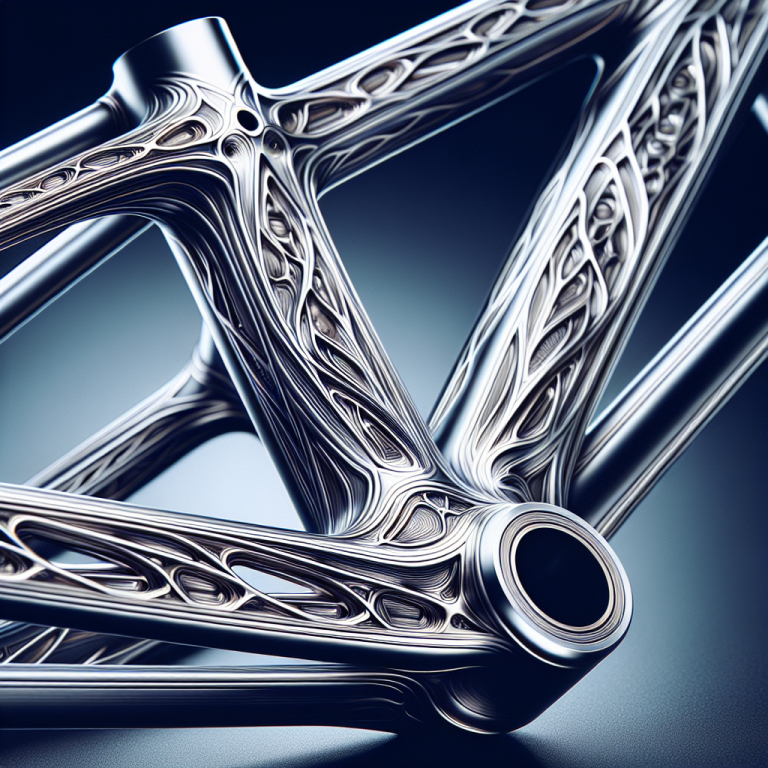Are you a cyclist looking for the perfect water bottle to keep you hydrated on those long rides? Look no further! This guide provides a comprehensive overview of the best water bottles specifically designed for cyclists. From durable materials to leak-proof caps, we’ve got you covered. Stay tuned as we explore the different features, sizes, and designs that will make your cycling experience even more enjoyable. Stay hydrated and pedal on with confidence!
Table of Contents
ToggleTypes of Water Bottles
When it comes to choosing a water bottle for your cycling adventures, there are several types to consider. Each type has its own unique features and benefits, so it’s important to understand the differences before making your decision.
Plastic Water Bottles
Plastic water bottles are a popular choice for many cyclists due to their affordability and lightweight design. These bottles are typically made from BPA-free plastic and come in a variety of sizes to accommodate your hydration needs. They are easy to clean and maintain, making them a convenient option for cyclists on the go.
However, plastic water bottles may not offer the same level of insulation as other types, and they may not be as durable as options like stainless steel or hydration packs. It’s important to consider your specific needs and preferences when deciding if a plastic water bottle is the right choice for you.
Insulated Water Bottles
Insulated water bottles are designed to keep your drinks at the desired temperature for longer periods of time. These bottles are typically made with a double-wall construction and are often vacuum-insulated, which provides superior temperature retention. This is particularly beneficial for cyclists who enjoy long rides or hot weather conditions.
While insulated water bottles typically come at a higher price point than their non-insulated counterparts, the added insulation can be worth the investment if you value keeping your drinks cold or hot throughout your ride.
Collapsible Water Bottles
Collapsible water bottles are a space-saving option for cyclists who prioritize portability and convenience. These bottles are made from flexible materials that allow them to be easily compressed when empty, taking up minimal space in your bag or pocket. They are lightweight and typically come with a carrying handle or carabiner for easy attachment.
However, collapsible water bottles may not offer the same durability as other types, as the flexible material is more prone to wear and tear over time. Additionally, they may not have the same insulation capabilities as insulated options.
Stainless Steel Water Bottles
Stainless steel water bottles are known for their durability and temperature retention capabilities. These bottles are made from food-grade stainless steel, making them resistant to corrosion and odors. They are often double-walled and vacuum-insulated, providing excellent insulation for both hot and cold beverages.
Stainless steel water bottles are typically heavier than other types, but they are built to withstand the rigors of cycling. If you prioritize durability and temperature retention, a stainless steel water bottle may be the perfect choice for you.
Hydration Packs
Hydration packs are a popular choice for cyclists who want to stay hydrated on long rides without having to reach for their water bottle constantly. These packs typically consist of a backpack or waist pack with a built-in water reservoir and drinking tube. This allows you to sip water without interrupting your ride.
Hydration packs come in various sizes, offering larger capacities than traditional water bottles. They are designed for comfort and often come with adjustable straps and back padding. However, hydration packs can be bulkier and may require more maintenance, such as cleaning the water reservoir and drinking tube.
Features to Consider
When choosing a water bottle for cycling, there are several features to consider. These features will help determine which bottle is best suited for your specific needs and preferences.
Capacity
The capacity of a water bottle refers to the amount of liquid it can hold. Consider how much water you typically consume during your rides and choose a bottle that can accommodate your hydration needs. Smaller capacities, such as 500ml, are suitable for shorter rides, while larger capacities, like 1 liter or more, are better for longer rides or hot weather conditions.
Bottle Material
The material of the water bottle plays a significant role in its durability, weight, and insulation capabilities. Common materials include plastic, stainless steel, and collapsible fabrics. Each material has its own advantages and disadvantages, so consider your priorities when selecting the bottle material.
Durability
Durability is crucial for a water bottle that will be used during cycling. It should be able to withstand the bumps and jolts of the road or trail without breaking or leaking. Look for bottles made from strong materials, such as stainless steel or durable plastics, that can resist impact and wear.
Insulation
If you prefer your drinks to stay cold or hot during your rides, insulation is an important feature to consider. Insulated water bottles or double-walled stainless steel bottles are designed to keep your beverages at the desired temperature for an extended period. This is especially beneficial for longer rides or hot weather conditions.
Spout Design
The spout design of a water bottle affects how easy it is to drink from while cycling. Look for bottles with a convenient spout design that allows for easy sipping or pouring without having to stop or tilt the bottle too much. Some bottles even come with nozzles or straws for added convenience.
Bite Valves
Some water bottles, especially those designed for hydration packs, come with bite valves. These valves allow for hands-free drinking by simply biting down on the valve to release the flow of water. If you prefer a hands-free drinking experience, look for bottles with bite valves.
Ease of Cleaning
Cleaning and maintaining your water bottle is essential for hygiene and longevity. Look for bottles that are easy to disassemble and clean thoroughly. Some bottles have wide-mouth openings, making them easier to clean, while others may require special brushes or tools to reach all the nooks and crannies.
Leak-Proof
A leak-proof water bottle is essential for cycling, as it prevents unwanted spills and keeps your belongings dry. Look for bottles with secure closure systems, such as screw-on caps or leak-proof lids, to ensure your bottle won’t leak during your rides.
Weight
The weight of your water bottle can impact your cycling performance, especially if you are carrying multiple bottles or riding for long distances. Consider the weight of the bottle when filled with water and choose a lightweight option that won’t weigh you down.
Attachment Compatibility
If you prefer to have your water bottle easily accessible during your ride, consider bottles that are compatible with bottle cages or attachment systems. Many cyclists attach their water bottles to their bike frames using bottle cages, while others prefer bottles with built-in hooks or loops for easy attachment.
Plastic Water Bottles
Advantages
Plastic water bottles offer several advantages for cyclists. They are lightweight, making them ideal for riders looking to minimize weight on their bikes. Plastic bottles also tend to be more affordable compared to other options, making them a budget-friendly choice.
Disadvantages
The main disadvantage of plastic water bottles is that they may not offer the same level of insulation as other types. If you prefer your drinks to stay cold or hot throughout your ride, a plastic bottle may not be the best option. Additionally, plastic bottles may not be as durable as stainless steel or hydration packs and can potentially develop leaks or cracks over time.
Cleaning and Maintenance
Plastic water bottles are generally easy to clean and maintain. They can be easily washed by hand using warm soapy water or run through a dishwasher if they are labeled as dishwasher safe. However, it’s important to clean them regularly to prevent the build-up of bacteria, especially if you use them for sports drinks or other sugary beverages.
Insulated Water Bottles
Advantages
Insulated water bottles provide superior temperature retention, allowing you to enjoy cold or hot drinks throughout your ride. The double-wall construction and vacuum insulation technology create a barrier that keeps the temperature of your beverage stable for extended periods. This is particularly beneficial for long rides or hot weather conditions.
Disadvantages
The main disadvantage of insulated water bottles is their higher price point compared to non-insulated options. Insulated bottles tend to be more expensive due to the added insulation technology. If you don’t prioritize temperature retention or are on a tight budget, an insulated bottle may not be necessary.
Cleaning and Maintenance
Cleaning insulated water bottles is generally straightforward. Most models can be disassembled for thorough cleaning, and the double-wall design makes it easier to reach all the surfaces. It’s important to follow the manufacturer’s instructions for cleaning to ensure the insulation properties are not compromised.
Temperature Retention
The insulation properties of insulated water bottles allow them to retain the temperature of your drinks for extended periods. Cold beverages can stay chilled for several hours, while hot beverages can remain hot for a similarly long time. This is particularly beneficial for cyclists who enjoy sipping on cold water or hot coffee throughout their rides.
Collapsible Water Bottles
Advantages
Collapsible water bottles are popular among cyclists who value portability and convenience. These bottles are made from flexible materials that can be easily compressed when empty, taking up minimal space in your bag or pocket. They are lightweight and often come with a carrying handle or carabiner for easy attachment.
Disadvantages
Collapsible water bottles may not offer the same durability as other options. The flexible materials they are made from are more prone to wear and tear over time, and the bottles may develop leaks or cracks. Additionally, collapsible bottles may not have the same insulation capabilities as insulated options, so consider your temperature retention preferences when choosing a collapsible bottle.
Cleaning and Maintenance
Cleaning collapsible water bottles is generally simple. Most models are dishwasher safe, or they can be washed by hand using warm soapy water. Make sure to thoroughly dry the bottle before collapsing it for storage to prevent the growth of mold or mildew.
Portability
The main advantage of collapsible water bottles is their portability. These bottles can be easily rolled up or compressed when empty, making them space-saving options for cyclists. They are lightweight and often come with built-in carrying handles or carabiners, allowing you to attach them to your bike, backpack, or belt for easy access.
Stainless Steel Water Bottles
Advantages
Stainless steel water bottles are known for their durability and temperature retention capabilities. These bottles are made from food-grade stainless steel, making them resistant to corrosion and odors. They are often double-walled and vacuum-insulated, providing excellent insulation for both hot and cold beverages.
Stainless steel bottles are also favored by those concerned about the environmental impact of plastic bottles, as they are reusable and can help reduce single-use plastic waste.
Disadvantages
The main disadvantage of stainless steel water bottles is their weight. Stainless steel bottles tend to be heavier compared to plastic or collapsible options, which can be a concern for cyclists looking to minimize weight. However, the durability and insulation properties of stainless steel bottles make them a popular choice despite the added weight.
Cleaning and Maintenance
Cleaning stainless steel water bottles is generally straightforward. Most models can be disassembled for thorough cleaning, and the materials used are often resistant to odors and stains. It’s important to clean the bottles regularly to prevent the build-up of bacteria.
Temperature Retention
Stainless steel water bottles excel in temperature retention, keeping your beverages hot or cold for extended periods. The double-wall construction and vacuum insulation technology create a barrier that prevents heat transfer, ensuring your drinks maintain their desired temperature for longer. This is particularly beneficial for cyclists who enjoy sipping on hot coffee or icy cold water throughout their rides.
Durability
Durability is one of the key advantages of stainless steel water bottles. These bottles are built to withstand the demands of cycling, making them resistant to impact and wear. They are less likely to develop leaks or cracks compared to other materials, ensuring they can withstand the rigors of your cycling adventures.
Hydration Packs
Advantages
Hydration packs offer several advantages for cyclists who want to stay hydrated without the need to reach for a water bottle constantly. These packs typically consist of a backpack or waist pack with a built-in water reservoir and drinking tube. This allows you to sip water while on the move, without interrupting your ride.
Hydration packs also offer larger capacities compared to traditional water bottles, making them suitable for longer rides or when access to water sources is limited. Additionally, they are designed for comfort, often featuring adjustable straps, back padding, and ventilation systems.
Disadvantages
The main disadvantage of hydration packs is their bulkiness. The backpack or waist pack can add extra weight and make your cycling experience less streamlined. Additionally, the water reservoir and drinking tube require regular maintenance, including cleaning and drying, to prevent the growth of bacteria or mold.
Cleaning and Maintenance
Cleaning and maintaining hydration packs require more effort compared to traditional water bottles. The water reservoir and drinking tube need to be regularly cleaned with special brushes or tools. It’s important to follow the manufacturer’s instructions for cleaning and drying to ensure the water remains clean and free from bacteria.
Capacity
The capacity of hydration packs is usually larger compared to traditional water bottles. They typically range from 1.5 to 3 liters, offering ample water supply for longer rides or when access to water sources is limited. Consider your hydration needs and the length of your rides when choosing the capacity of your hydration pack.
Comfort
Hydration packs are designed with comfort in mind. Look for packs with adjustable straps, back padding, and ventilation systems to ensure a snug fit and airflow during your rides. Comfortable hydration packs will minimize bouncing and chafing, allowing you to focus on your cycling performance.
Drinking Tube Design
The drinking tube design of a hydration pack can significantly impact your drinking experience. Look for packs with easy-to-use bite valves or nozzles that allow for smooth and reliable water flow. Consider the length and positioning of the tube to ensure it doesn’t interfere with your cycling or cause discomfort.
Choosing the Right Bottle
Choosing the right water bottle for your cycling needs can make a significant impact on your hydration, comfort, and overall riding experience. Here are some key considerations to help you make the right choice:
Consider Your Cycling Needs
Think about the type of cycling you do and the duration of your rides. If you enjoy short rides or frequently stop at water sources, a smaller capacity bottle may be sufficient. However, if you go on long rides or ride in remote areas, a larger capacity bottle or hydration pack may be necessary.
Evaluate the Bottle Features
Consider the specific features that are important to you. Do you prioritize insulation to keep your drinks cold or hot? Do you prefer a particular spout design for easy drinking on the go? Evaluate the features of each type of bottle and determine which ones align with your preferences.
Decide on the Water Capacity
Evaluate your hydration needs and choose a bottle with an appropriate water capacity. Smaller capacities are suitable for shorter rides, while larger capacities are better for longer rides or when access to water sources is limited.
Think About Insulation Needs
If you enjoy sipping on cold water or prefer your hot drinks to stay hot, insulation is an important feature to consider. Insulated water bottles or double-walled stainless steel bottles are designed to keep your beverages at the desired temperature for extended periods.
Consider Durability
Durability is crucial for a water bottle that will be used during cycling. Look for bottles made from strong materials, such as stainless steel or durable plastics, that can withstand the rigors of the road or trail without breaking or leaking.
Assess Your Cleaning Preferences
Consider how easy it is to clean and maintain the water bottle. Bottles with wide-mouth openings or removable parts are generally easier to clean thoroughly. Regular cleaning is important to prevent the build-up of bacteria or odors, especially if you use the bottle for sports drinks or sugary beverages.
Evaluate Leak-Proof Characteristics
A leak-proof bottle is essential for cycling, as it prevents spills and keeps your belongings dry. Look for bottles with secure closure systems, such as screw-on caps or leak-proof lids, to ensure your bottle won’t leak during your rides.
Weight Considerations
The weight of your water bottle can impact your cycling performance, especially if you carry multiple bottles or ride for long distances. Consider the weight of the bottle when filled with water and choose a lightweight option that won’t weigh you down.
Think About Attachment Compatibility
If you prefer easy access to your water bottle during your ride, consider bottles that can be attached to your bike frame using bottle cages or other attachment systems. Many bottles come with built-in hooks or loops for easy attachment to your bike, backpack, or belt.
Consider Budget Constraints
Finally, consider your budget when choosing a water bottle. Different types of bottles and brands come at various price points, so determine how much you are willing to spend and prioritize the features that are most important to you.
Benefits of Using Water Bottles
Using water bottles while cycling offers several benefits that can enhance your riding experience. Here are four key benefits:
Hydration
Staying hydrated is crucial for optimal performance and overall health during your cycling rides. Having a water bottle readily available allows you to sip water whenever you need it, maintaining your hydration levels and preventing dehydration.
Convenience
Using a water bottle is convenient, as it eliminates the need to stop or find water sources during your rides. With a water bottle within reach, you can easily sip water while on the move, ensuring you stay hydrated without interrupting your cycling flow.
Cost-Effective
Investing in a reusable water bottle can be cost-effective in the long run. Instead of purchasing single-use plastic bottles or drinks from convenience stores, using your own water bottle eliminates unnecessary expenses. This is especially beneficial for cyclists who go on frequent rides or long-distance adventures.
Environmental Friendliness
Using a reusable water bottle helps reduce waste and minimize your environmental footprint. Single-use plastic bottles contribute to plastic pollution and take centuries to decompose. By choosing a reusable water bottle, you can significantly reduce your plastic waste and contribute to a more sustainable environment.
Conclusion
Choosing the right water bottle for your cycling needs is an important decision that can greatly impact your hydration, comfort, and overall riding experience. Consider the different types of water bottles available, such as plastic, insulated, collapsible, stainless steel, and hydration packs, and evaluate their advantages and disadvantages.
Take into account features like capacity, bottle material, durability, insulation, spout design, bite valves, ease of cleaning, leak-proof characteristics, weight, and attachment compatibility. Assess your specific cycling needs and preferences to determine which features are most important to you.
Using a water bottle while cycling offers numerous benefits, including hydration, convenience, cost-effectiveness, and environmental friendliness. By making an informed decision and choosing the right water bottle for your needs, you can ensure a comfortable and well-hydrated cycling experience. So grab your water bottle, hit the road, and enjoy your rides to the fullest.

